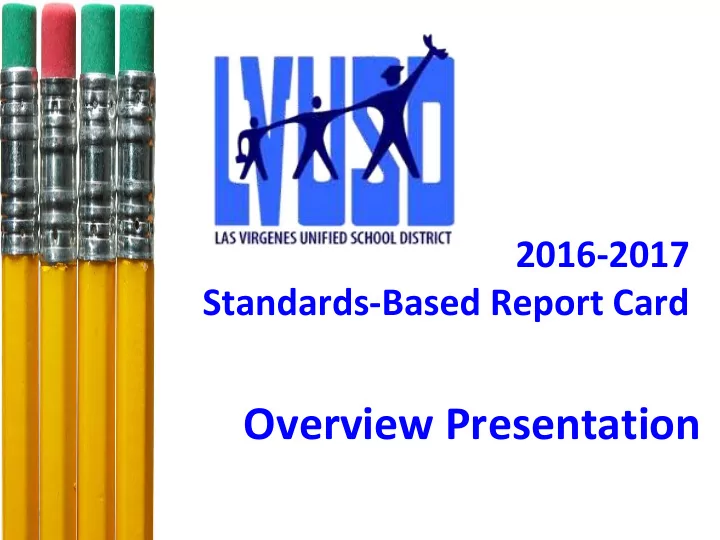

2016-2017 Standards-Based Report Card Overview Presentation
“Why … would anyone want to change current grading practices?” The answer is quite simple: grades are so imprecise that they are almost meaningless.” --Robert Marzano
Why Standards-Based? “Grading as it has been done traditionally promotes a culture of point accumulation not learning, encourages competition not collaboration, often focuses on activities not results … and only involves assessment OF learning because everything students do gets a score and every score ends up in the grade book.” ---Ken O’Connor
Traditional Grading • Letter grades-A, B, C, D, F • Academic achievement tainted by non-academic factors • Grade everything and average it together • Chronological listing of all the assignments • Report a single grade for a class
Practices that Inhibit Learning • Including behaviors in academic grade • Assessments not linked to learning targets • Grading first effort (formative assessment) • Always using the average to determine a grade • Old and recent scores are given the same weight
More Traditional Grading Problems • Has a student who receives a “C” based upon 100% homework completion and 50% test average really mastered the standards? • How do grades affect the motivation of students who experience early failure and see no way to climb out of the hole they’re in?
What is a Learning Standard? … an agreed upon statement of what a student should know and be able to do in a given content area. *
STANDARDS BASED GRADING • A focus on mastering content “standards” instead of accumulating points • A report of what students know and are able to do • A balance of formative and summative assessments (mounting evidence) • A record keeping system that informs instruction • A system that encourages student reflection and responsibility for learning
SBG Principle #1 The purpose of grades is to communicate student achievement • Based on state and district standards • Academic performance only • Behaviors reported separately
SBG Principle #2 A Grading Program Should • Be Fair • Be Consistent • Support Learning • Promote Communication between teachers/students/parents
SBG Principle #3 Relate grading procedures to learning goals • Identify critical concepts/skills • Assess individual concepts/skills • Mastery is the standard • Summative vs. Formative activities • Multiple Opportunities to Demonstrate Learning
SBG Principle #4 The Following Should NOT be in a Grade... • Effort • Attendance • Participation • Citizenship • Attitude • Bonuses • Behavior • Group Work • Homework • Anything that doesn’t relate to a standard
Real Life Applications • In real-life, attainment of important milestones (SATs, certificates, drivers’ licenses, CPA, bar exam, medical boards, etc.) allows for multiple opportunities with course corrections along the way. • Sports
Final Thoughts www.lvusdreportcard.com
Recommend
More recommend